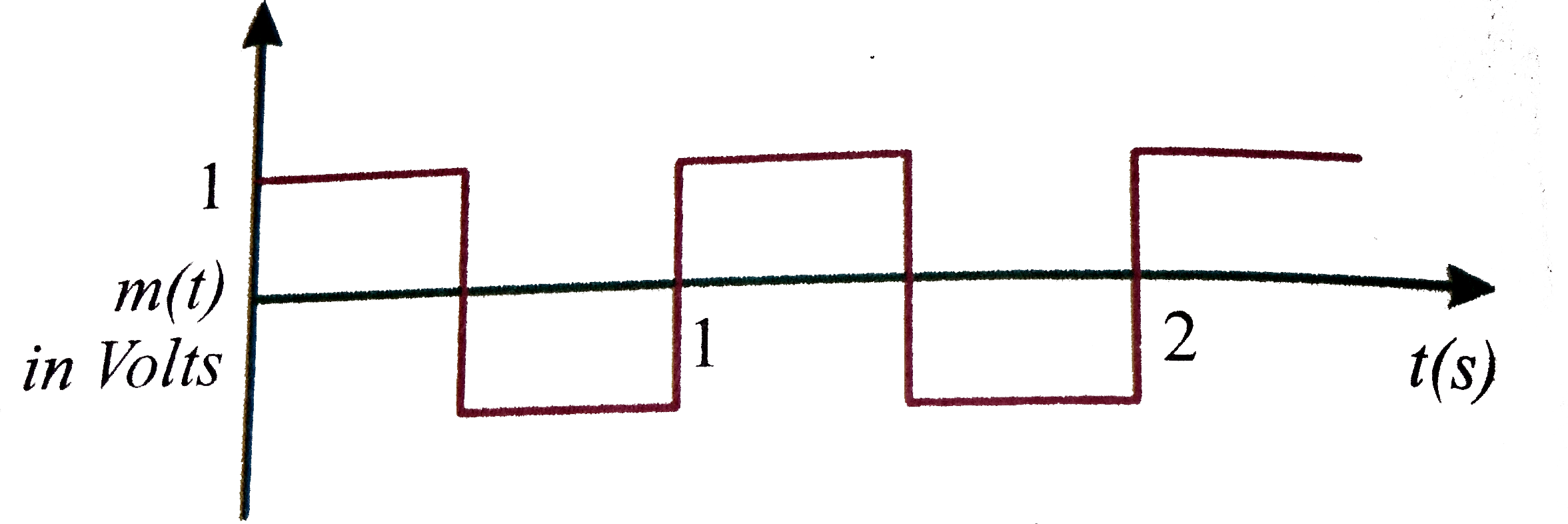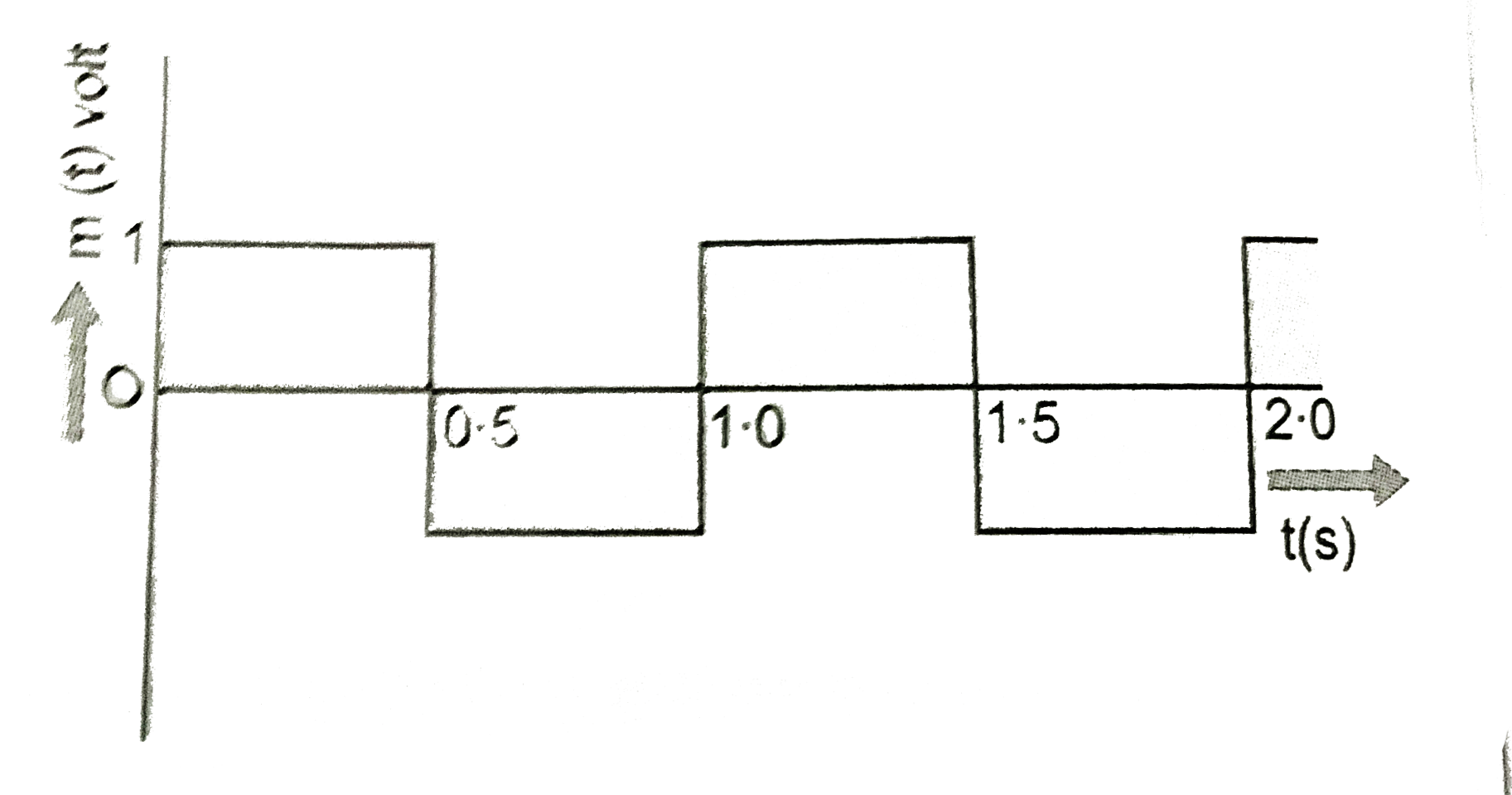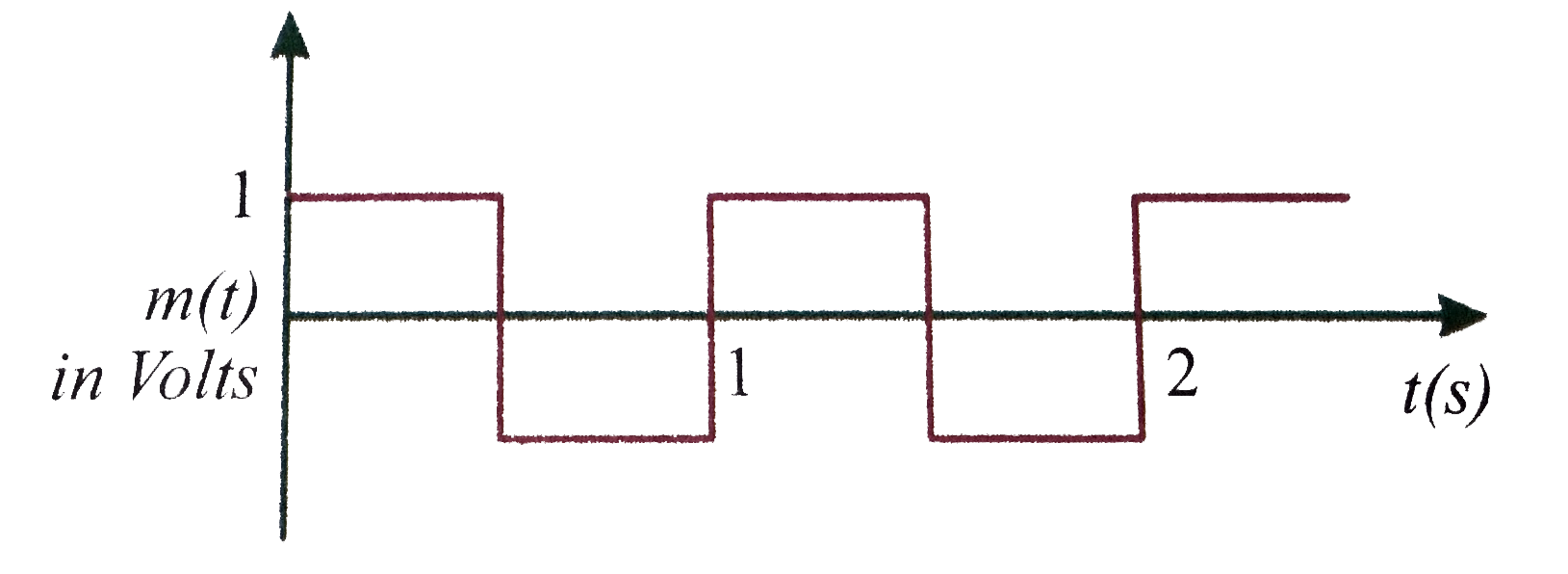Suppose that the modulating signal is m(t)=2cos(2πfmt) and the carrier signal is xc(t)=Accos(2πfct) which one of the following is a conventional AM signal without over modulation
x(t)=Acm(t)cos(2πfct)
x(t)=Ac(1+m(t))cos(2πfct)
x(t)=Accos(2πfct)+Ac4m(t)cos(2πfct)
xc(t)=Accos(2πfmt)+cos(2πfct)+Acsin(2πfmt)sin(2πfct)
The correct Answer is:C
Convention AM signal withour over modulation means m<1
x(t)=Ac(1+m(t))cos(2πfct)
For option C
x(t)=Ac(1+14m(t))cos(2πfct), ∴M=14
Topper's Solved these Questions
- BOOK - NARAYNACHAPTER - COMMUNICATION SYSTEMEXERCISE - Level-III11videos
COMMUNICATION SYSTEM
- BOOK - NARAYNACHAPTER - COMMUNICATION SYSTEMEXERCISE - NCERT Based16videos
COMMUNICATION SYSTEM
- BOOK - NARAYNACHAPTER - COMMUNICATION SYSTEMEXERCISE - Level-I(C.W)16videos
COMMUNICATION SYSTEM
- BOOK - NARAYNACHAPTER - CAPACITANCEEXERCISE - Previous IIT-JEE16videos
CAPACITANCE
- BOOK - NARAYNACHAPTER - CURRENT ELECTRICITYEXERCISE - Level 643videos
CURRENT ELECTRICITY
Similar Questions
In amplitude modulation, the message signal Vm(t)=10sin(2π×105t) volts and Carrier signal
VC(t)=20sin(2π×107t) volts The modulated signal now contains the message signal with lower side band and upper side band frequency, therefore the bandwidth of modulated signal is α KHz. The value of α isView SolutionThe carrier wave of a signal is given by C(t) = 3sin(8πt)volt.
The modulating signal is a square wave as shown. Find its modulation index.View Solution
Knowledge Check
- Question 1 - Select One
Equation of messages signal m=2sinωm(t) and carrier signal c=4sinωC(t). The equation of modulating signal will be
A4sinωC(t)+2sinωm(t)B4sinωC(t)+2sinωm(t)⋅sinωC(t)C8sinωC(t)+sinωm(t)D(1+sinωm(t))sinωm(t) - Question 2 - Select One
A message signal m(t)=4cos2000πt modulates the carrier C(t)=cos2πfct where fc=1MHz to produce an AM signal. For demodulation using envelope detector the time constant RC should satisfy
A0.5ms<RC<1msB1μs<<RC<<1msCRC>>1μsDRC>>1μs - Question 3 - Select One
A modulating signal is a square wave as shown in figure.

The carrier wave is given by
c(t)=2sin(8πt)volt.
The modulation index isA2B0.75C0.5D1.5
A modulating signal is a square wave is shown in figure. The carrier wave is given by C(t)=2sin(8πt) volt.
(i) Sketch the amplitude modulated wave form.
(ii) What is the modulating index?
 View Solution
View SolutionA modulating signal is a square wave as shown in the figure

The carrier wave is given by.
c(t)=1.33sin(8πt)volts
The modulation index isView SolutionIn amplitude modulation equation of mesenger wave Aosinωmt and carrier wave ACcosωCt the equation of amplitude modulated wave is
View SolutionIn amplitude modulation, sinusoidal carrier frequency used is denoted by ωc and the signal frequency is denoted by ωm. The band width (Δωm) of the signal is such that Δωm<<ωc. Which of the following frequencies is not contained in the modulated wave?
View SolutionIn amplitude modulation, sinusoidal carrier frequency used is denoted by ωc and the signal frequency is denoted by ωm. The handwidth (Δωm) of the signal is such that Δωm<<ωc. Which of the following frequency is no =t contained in the modulated wave.
View Solution

